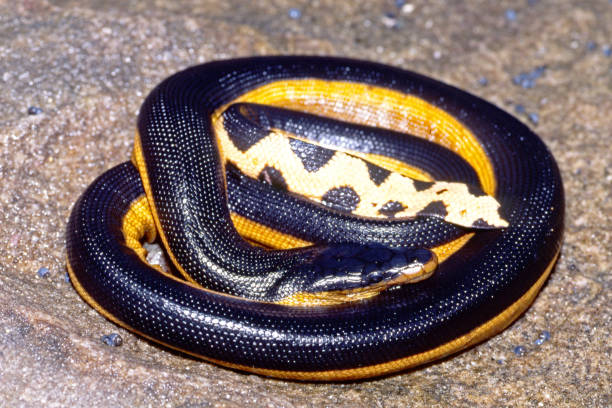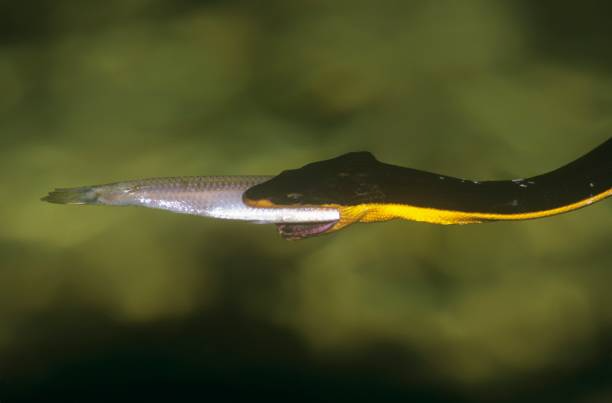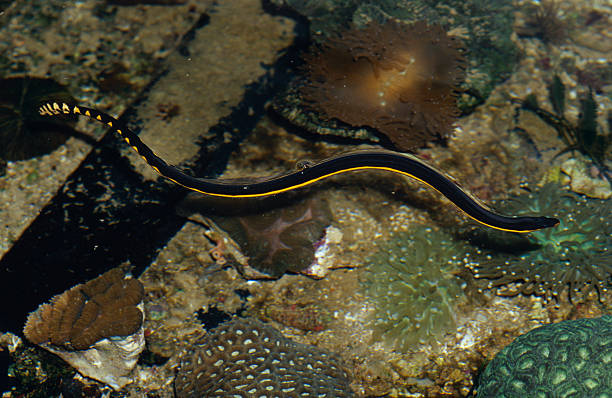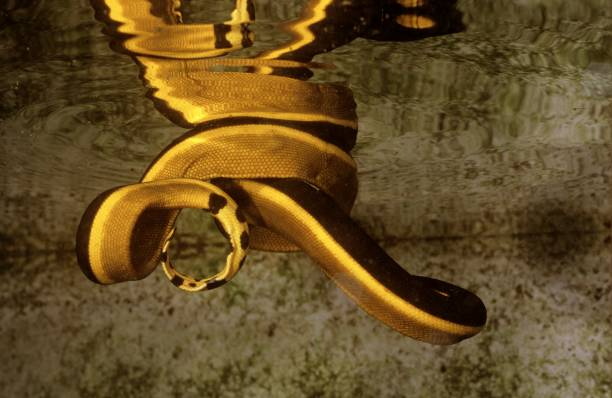Table of Contents
Scientific Classification
| Kingdom | Animalia |
| Phylum | Chordata |
| Class | Reptilia |
| Order | Squamata |
| Family | Elapidae |
| Genus | Elapidae |
| Species | Hydrophis platurus |
| Scientific Name | Hydrophis platurus |
Description
The Yellow-Bellied Sea Snake boasts one of the broadest ranges of any sea snake species. It inhabits the warm waters of the Pacific and Indian Oceans, stretching from the east coast of Africa to the west coast of the Americas. You can often spot it in the waters around Australia, Southeast Asia, and along the coasts of Central and South America. Occasionally, this sea snake can be found as far north as the western coast of the United States, thanks to ocean currents.

Habitat
This species is fully aquatic and seldom, if ever, ventures onto land. It prefers warm ocean waters and is commonly found in coastal lagoons, open seas, and around coral reefs. It flourishes in waters with temperatures above 18°C (64°F) and can endure high salinity levels. You can often spot it floating in large groups on the ocean’s surface, and occasionally, these groups create extensive patches known as “slicks.”
Diet
The Yellow-Bellied Sea Snake is a carnivore that primarily feeds on small fish. It employs its venomous fangs to deliver a potent neurotoxin that swiftly paralyzes its catch. Often, it hunts by remaining motionless on the ocean’s surface, patiently waiting for fish to swim beneath it before launching a rapid strike. Unlike many other snakes, it does not pursue its prey aggressively; instead, it utilizes an ambush hunting technique.

Behavior
This snake is specially adapted to life in the ocean and spends its whole life in open waters. It is very buoyant and can frequently be spotted floating with its head just below the surface. It hunts both during the day and at night, making it active at all hours. The Yellow-Bellied Sea Snake needs to breathe air and often comes up to the surface. It can hold its breath for as long as 3 hours while diving. Unlike snakes found on land, it tends to be non-aggressive unless threatened. Its venom is primarily used for hunting rather than for self-defense.
Lifespan
The average lifespan of a Yellow-Bellied Sea Snake in the wild is thought to be between 5 and 10 years. However, various factors such as the environment, predators, and food supply can influence this lifespan. In captivity, these snakes are challenging to maintain due to their specific requirements for salinity and water conditions, making it difficult to determine how long they might live in human care.
Reproduction and Lifecycle
The Yellow-Bellied Sea Snake stands out among reptiles due to its unique reproductive method. It is ovoviviparous, meaning it gives birth to live young rather than laying eggs. Typically, females have between 2 to 9 offspring, each measuring around 8 to 10 inches (20 to 25 cm) at birth. These young snakes are fully independent right from the start, able to swim and hunt on their own. Mating takes place in the water, and the gestation period lasts about 5 to 6 months. They usually reach sexual maturity within 2 to 3 years.

Predators
The Yellow-Bellied Sea Snake is indeed venomous, but it faces threats from several natural predators, including:
- Large fish, such as tuna and sharks
- Seabirds, like albatrosses and frigatebirds
- Marine mammals, including sea lions and dolphins
- Other sea snakes, though this is rare
Since it often stays near the ocean’s surface, it becomes an easy target for predators, particularly when it is inactive or drifting among debris.
Adaptations
The Yellow-Bellied Sea Snake has developed special traits that help it live in the ocean:
Paddle-like tail: Acts as a rudder, allowing for swift and precise movement in water.
Salt excretion glands help control salt levels inside the body. This lets it live in seawater without needing freshwater.
Neurotoxic venom: Paralyzes fish almost instantly, making hunting more efficient.
High lung capacity: Enables it to stay underwater for long periods without surfacing.
Coloration: The dark top hides in the ocean from above. The yellow belly helps it blend in from below, keeping it safe from predators.

Conservation Status
The Yellow-Bellied Sea Snake is currently listed as Least Concern by the IUCN. Although its population seems stable, there are increasing worries about:
Climate change, which can alter ocean temperatures and currents, potentially affecting their distribution.
Pollution, such as plastic waste and oil spills, poses a serious risk to marine life.
Bycatch, where they get unintentionally caught in fishing nets, results in accidental deaths.
Despite these challenges, the species is still widespread and resilient. Conservation efforts primarily focus on maintaining healthy ocean ecosystems to help ensure their survival.
Conclusion
The Yellow-Bellied Sea Snake is a fascinating marine reptile. It possesses unique adaptations that enable it to thrive in some of the most unpredictable waters on the planet. As one of the few truly pelagic snakes, it showcases a remarkable evolution among serpents. While humans seldom encounter it, this species plays a vital role in maintaining the balance of marine ecosystems. By protecting its environment, we ensure that this incredible creature can continue to glide gracefully through our oceans for many years ahead.



